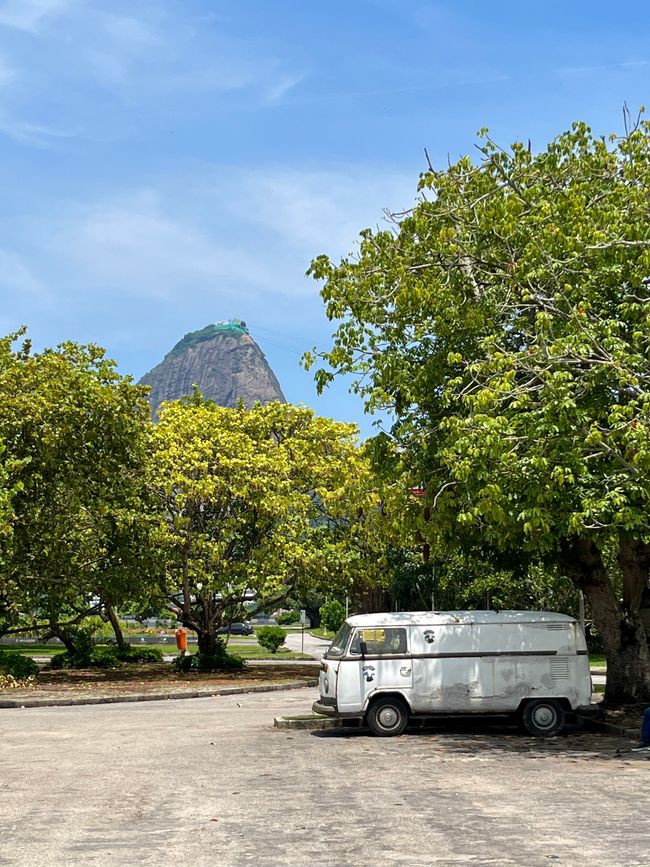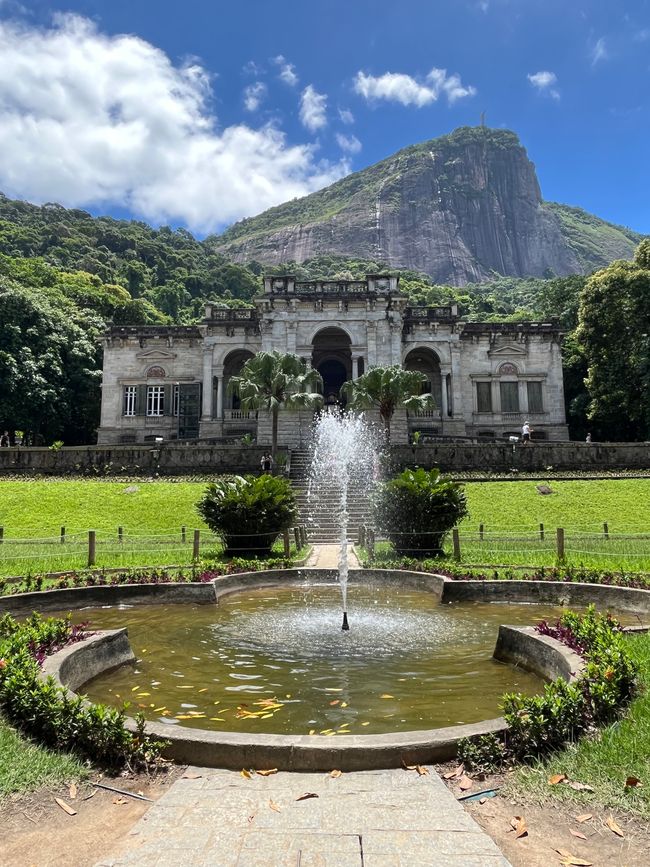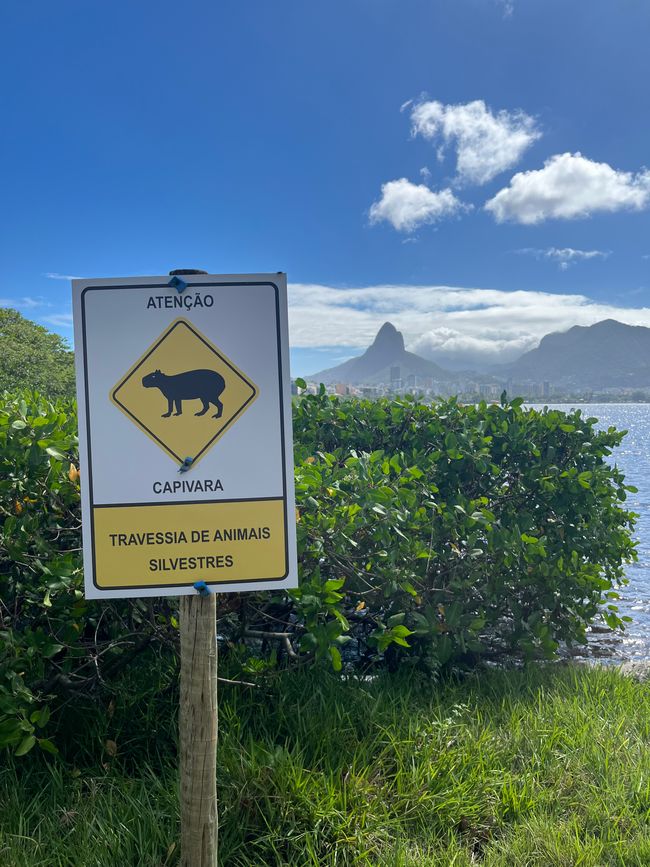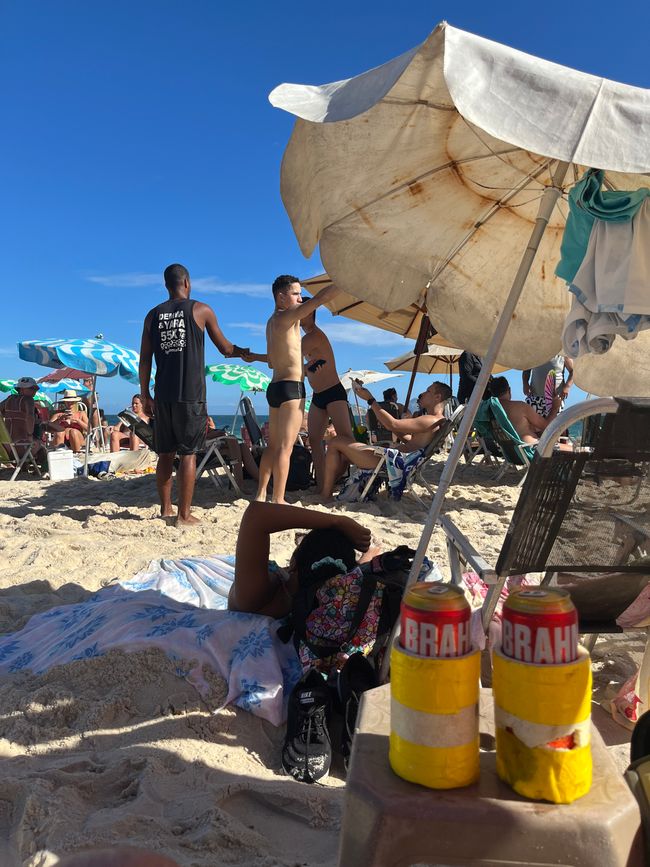Rio de Janeiro
Publicados: 13.03.2024
Assine o boletim informativo
Strike by ground staff at airports in Germany from Thursday, flight with stopovers in Lisbon and Sao Paulo on Wednesday. Good timing is everything. ;)
So, here we are again - Rio (with a spontaneous travel companion from Chemnitz, so the first few weeks should be quite entertaining).
It's not that easy to write something short and succinct about this crazy city. Where do you start, where do you end? Metropolis of contrasts: Leblon, Copacabana, Ipanema, the noble districts on the city's beaches. Directly behind it, favelas are nestled in the slopes of the granite hills, formerly settlements for servants, now densely built up, a home for all those who can no longer afford to live in all the expensive corners of the big city.
Picturesquely located at the entrance to Guanabara Bay, despite all the problems, high crime and environmental pollution, the city exerts an incredible fascination (yes, on me too) and attracts almost 5 million tourists during Carnival week.
Carnival in Rio, at least that's new for me and after I had already ticked off all the tourist stuff last time, this time I was able to fully devote myself to the many parades (called blocos) and events during the carnival.
Our Swiss friend Oli was contacted in advance and got a room in the Mambembe Hostel. Oli is the owner of the hostel and has been living here for 12 years.
We took it pretty easy for the first few days. Hanging out in the hostel, meeting new people, walking around the city and visiting the stadium every now and then.
The days after that were less quiet. In the hostel we briefly checked the recommendations of the day and went to one of the numerous blocos and with sometimes thousands of like-minded people, wildly costumed and full of glitter, listening to the sounds of music at over 30°, dancing, celebrating and letting yourself be carried away by the incredibly lively spirit of the city.
The blocos start quite early and the celebrations usually take place during the day, which has the advantage that you don't have to spend the whole night there and have enough time to regenerate. That's clearly what the locals recommend: go to bed early and get up early in order to fully experience the unique atmosphere of the very different Blocos.
Bloco Céu na Terra (Heaven on Earth) - Start at 7am on the hills of Santa Teresa, very close to the hostel. Dancing through the narrow streets of the district to drums and trumpets. An incredibly relaxed and peaceful atmosphere in the air. Nice people, positive energy, just a wonderful and not-so-crowded event right at the start of the carnival. Around midday and after the bloco had slowly dissipated, a few people went from the hostel to Oli's house just around the corner and spent the day idling by and in the pool with home-brewed beer and pizza. It couldn't be better.
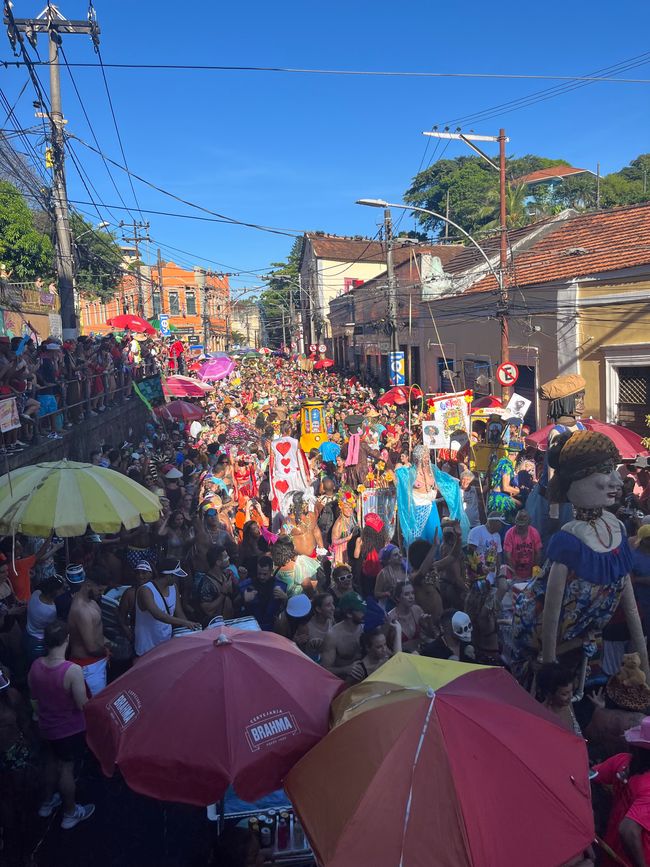
Bloco Boi Tolo - one of the largest and most famous blocos in the city, with the special feature that it starts (again quite early) in 3 different places in the city, then joins together into a huge, dancing bunch over the course of the day and finally through the street tunnel which connects Copacabana and Ipanema.
The most asked question that day is “Cadê o Boi Tolo?” (Where is the Boi Tolo?), asked by all the people who are looking for the Bloco during the morning to join the event before the dance through the tunnel. With 2 more Almans in our luggage, we also went looking for the Boi Tolo not quite as early. As we passed the beaches of Flamengo and Botafogo, the crowds became increasingly dense and the atmosphere became more and more relaxed. With the Sugar Loaf Mountain in sight (an incredible backdrop), we overtook the Bloco, which had already joined forces, and waited in the front area of the tunnel for the crowds to move closer and closer to us. A short time later, thousands of people crowded together and danced past us into the tunnel and we had no choice but to just let ourselves drift. An incredible energy that pushed the masses through the completely overcrowded tunnel, constantly driven by the sound of the drums and the singing of the artists who formed the front of the block. Crazy, you simply have to experience something like that, even if you shouldn't use Central European standards to assess safety during the narrow passage.
At the tunnel exit, when you transitioned into the 35° warm outside air, you briefly felt like you were being blown by a cold autumn wind and you can only imagine what temperatures you were exposed to in the tunnel. Thanks go to the countless street vendors who provided water (and beer) all the time for an absolutely fair price, ensuring that we (and all the other partygoers) were well hydrated throughout the day. :)
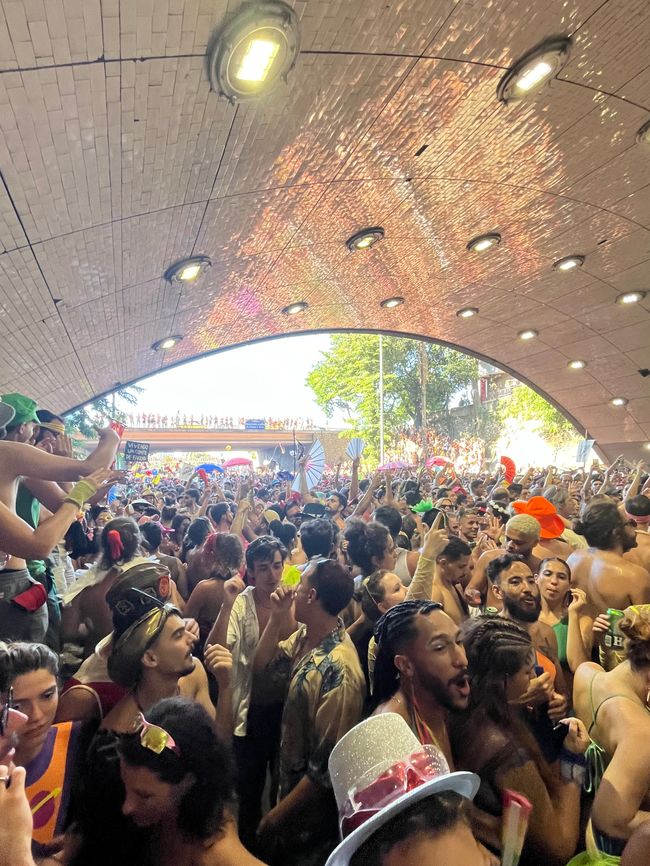
The rest of the time in Rio was quite varied: Blocos, extensive discovery tours through the city, the beach and a few trips to the city's favelas.
Unfortunately, we also had to take a few days off in the hostel, because the final enemy was once again the air conditioning, which hit mercilessly when the outside temperature was 32° and the temperature in the trains was sometimes reduced to 17°. Unfortunately, when you're sweating and standing on the train, you have no chance of avoiding the (and ice-cold) air blowing in all directions and you get the rest.
Luckily the worst was over after a few days and I armed myself with a fleece jacket for the rest of the train journeys. Much to the astonishment of the Brazilians, who repeatedly stared at me in amazement as to why I was carrying a warm jacket under my arm through the city in mid-summer temperatures.
Another anecdote about traveling by train in Rio:
On the way to the suburbs (a few football games were attended there) an almost endless crowd of traders push through the train. What is sold here, loudly announced, is mainly drinks, snacks, sweets and other everyday items. However, there are also things that you wouldn't expect to find on public transport as merchandise: air pumps, cucumber peelers, umbrellas, glue, pot holders, speakers and headphones. Briefly surprised by the rather unusual offer, Oli later explained to me: The street vendors probably come mainly from the surrounding favelas and mostly belong to each other. Every now and then a van or truck is attacked and the stolen goods are distributed among each other and in the favela. The things that are not needed are then sold on the train alongside food and drink. In this way, the entire loot is utilized and brought to the man or woman.
Assine o boletim informativo
Responder
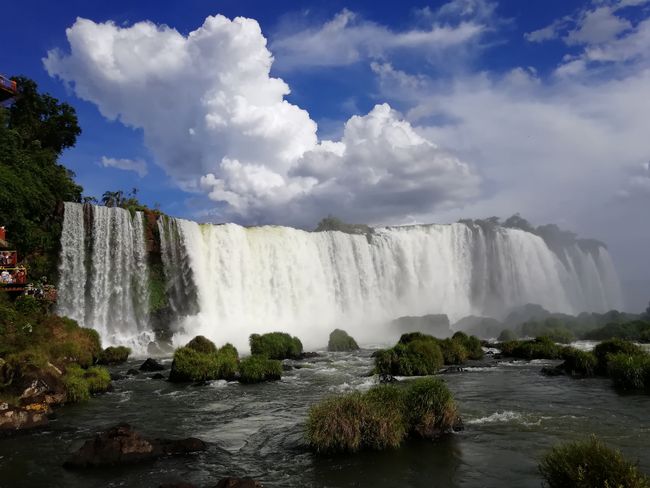
Relatórios de viagem Brasil


